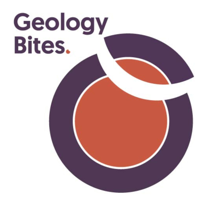
Geology Bites Podcast
1) Tom Herring on High-Precision Geodesy
There are three main types of geodetic measurement systems — satellite-based systems such as GPS, very long baseline interferometry (VLBI), and interferometric synthetic-aperture radar (InSAR). While ...Show More
2) Jiří Žák on the Orogenies that Shaped Central Europe
In this episode, Jiří Žák describes the two main orogenies whose remnants figure prominently in central European geology: the Cadomian orogeny that lasted from the late Neoproterozoic to the early Cam...Show More
3) Claudio Faccenna on the Dynamics of Subduction Zones
Subduction zones can be very long-lived, persisting for tens of even hundreds of millions of years. During that time they rarely stay still, but instead retreat, advance, move laterally, or reverse di...Show More
4) Cees Van Staal on the Origin of the Appalachians
In the podcast, Cees Van Staal tells us about the Paleozoic tectonic events that led to the formation of the Appalachians. The events are closely related to those involved in the Caledonian orogeny an...Show More
5) Andreas Fichtner on the Frontiers of Seismic Imaging
In previous episodes of Geology Bites, Barbara Romanowicz gave an introduction to seismic tomography and Ana Fereira talked about using seismic anisotropy to reveal flows within the mantle. In this ep...Show More
6) Mike Hudec on Salt Tectonics
Most of Earth’s salt is dissolved in the oceans. But there is also a significant amount of solid salt among continental rocks. And because of their mechanical properties, salt formations can have a ...Show More
7) Vic Baker on Megafloods
Megafloods are cataclysmic floods that are qualitatively different from weather-related floods. In the podcast, Vic Baker explains our ideas as to what causes megafloods and describes the striking evi...Show More
8) Lindy Elkins-Tanton on the Origin of Earth's Water
The planets formed out of a cloud of gas and dust around the nascent Sun. Within the so-called snow line, it was too hot for liquid water to exist. Since the Earth lies well within this line, why does...Show More
9) Joeri Witteveen on Golden Spikes
Golden spikes are not golden, nor are they generally spikes. So what are they, and, more importantly, what exactly do they represent? In the podcast, Joeri Witteveen explains how we arrived at our pre...Show More
10) Using the Late Paleozoic Ice Age as an Analog for Present Day Climate
The late Paleozoic ice age began in the Late Devonian and ended in the Late Permian, occurring from 360 to 255 million years ago. It was similar to the present day in two key respects: rising atmosphe...Show More